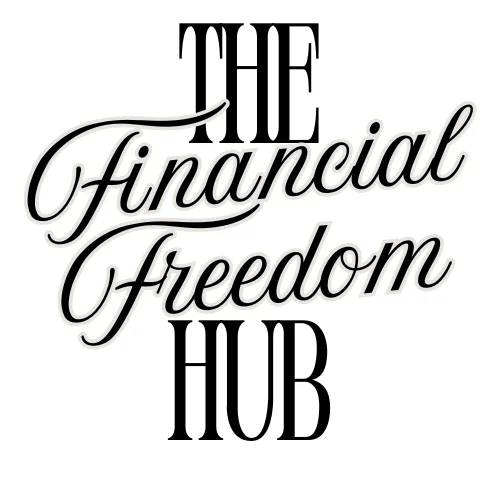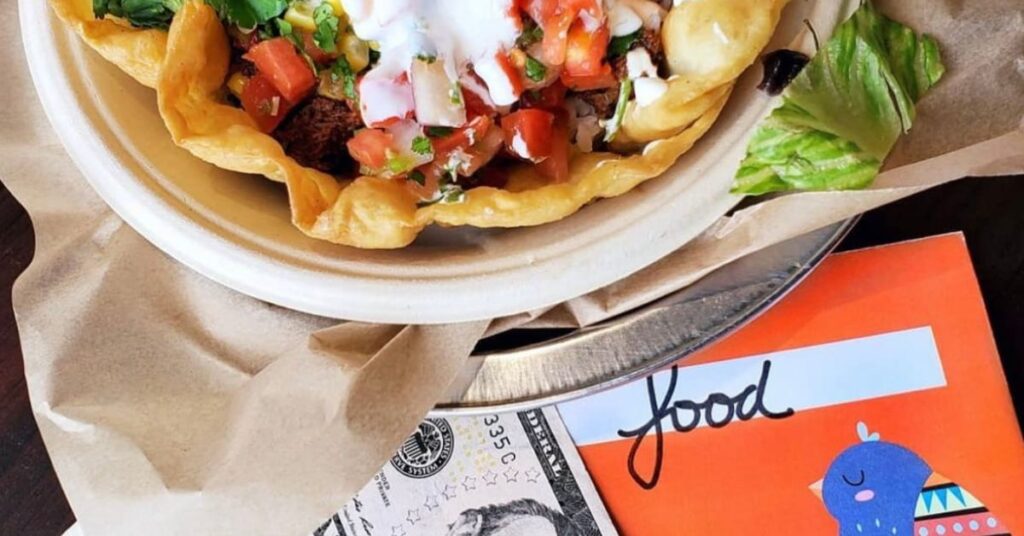You’re exhausted. It’s been a long day of working, parenting, managing a million invisible responsibilities, so you pick up your phone and order takeout. Again.
You tell yourself it’s just this once, but deep down, you know this is the third time this week. And honestly? You’re not even mad about the food. You’re mad that you didn’t have the time or energy to cook like you planned. You’re frustrated because your budget looks great on paper… but real life keeps getting in the way.
And you’re not alone.
Most people don’t go broke because of one big, irresponsible decision. It’s the slow, quiet drip of daily habits that feel harmless, but over time, they add up. The price of convenience isn’t just money. It’s your financial peace.
Let’s talk about what’s really going on, and how you can shift your spending patterns in a way that honors your real life, not an idealized version of it.
Convenience Isn’t the Enemy — But It Comes at a Cost
We live in a world that makes spending easier than ever. You can tap a screen and have groceries, dinner, and even a new mattress delivered to your door within hours. You can subscribe to a dozen platforms without ever having to pull out your wallet again. And on the surface, this seems like freedom. Simplicity. Control.
But here’s the truth most people miss:
Convenience often trades your future peace for present relief.
It’s not that these services are inherently bad. It’s that we rarely pause to ask what they’re actually costing us — not just in dollars, but in control, in discipline, and in awareness. We normalize these expenses to the point that they don’t feel like choices anymore — they feel like necessities. And that’s where the danger begins.
The Psychology of Convenience Spending
When you’re overwhelmed, depleted, or stressed out, your brain is wired to seek the path of least resistance. That’s basic survival mode. So when your energy is low, your decision-making gets compromised, and you don’t make the “best” financial decision. You make the easiest one.
You reach for the app. You hit “Buy Now.” You justify the expense by saying, “I deserve this.”
Convenience becomes more than just a time-saver — it becomes a coping mechanism. It’s a quick fix for a deeper problem: lack of margin. And until you deal with the root — the exhaustion, the overload, the emotional drain — you’ll keep reaching for short-term relief at the expense of long-term peace.
The Hidden Costs That Sneak Up on You
You know the obvious ones: the overpriced coffees, the late-night DoorDash, the monthly subscriptions. But the most dangerous costs of convenience are the ones you don’t even recognize as spending anymore. Let’s break them down.
1. Food Delivery and Takeout Fees
You order a $12 meal… and by the time the delivery fee, service fee, tax, and tip are added, your total is $25. Do that three times a week, and that’s $300 a month — just for convenience. That’s a car payment. That’s a full grocery run. That’s savings you say you “can’t find.”
2. Subscription Overload
Streaming, fitness apps, meal kits, cloud storage, beauty boxes — the list goes on. Most people don’t even remember what they’re subscribed to. And because the charges are small and automatic, they don’t feel like real spending. But if you’re paying $10 to 12 different services every month, you’re spending over $1,000 a year on things you might not even use.
3. Impulse Purchases from One-Click Shopping
Amazon, Target, and other retailers have made it frictionless to spend. One click, and it’s on the way. There’s no built-in pause. No “Do I really need this?” moment. And that’s exactly the point. These platforms are designed to separate you from your money as quickly and seamlessly as possible. You don’t even feel the purchase until your credit card bill shows up or you realize you blew through the cash in your envelopes.
4. Premium Upcharges for Speed and Access
We’re willing to pay extra to skip lines, get early access, or have things faster. Same-day shipping. VIP access. Express checkout. Priority seating. But what we often miss is that these are emotional decisions, not practical ones. We’re not buying speed — we’re buying relief. And it’s costing us hundreds.
5. Convenience-Driven Grocery Shopping
Pre-cut fruit. Packaged meals. Single-serve snacks. These items are priced significantly higher than their DIY versions. And while there’s nothing wrong with choosing a time-saver when you need it, doing it all the time can quietly double or triple your grocery bill.
Why This Spending Feels Justified (Even When It’s Not)
Here’s the kicker: most convenience spending feels reasonable in the moment. You’re not blowing hundreds on luxury bags. You’re just getting dinner. You’re just subscribing to an app that helps with productivity. You’re just buying something that’ll make life easier.
But the smallness of the spend is what makes it dangerous.
Because it’s not the $30 splurge that ruins your progress — it’s the 17 tiny $18 purchases you barely register. It’s death by a thousand swipes. And you don’t even notice until your bank account is empty and you’re wondering where all your money went.
The Emotional Tax You Don’t See
It’s not just the financial cost — it’s the guilt, the stress, the shame spiral that comes when you realize how much you’ve spent just to get through the day.
You start to believe you’re bad with money. You question your discipline. You feel stuck.
But here’s the truth: this isn’t a discipline issue. It’s a capacity issue.
You’re not bad with money. You’re burned out. You’re carrying too much. You’re trying to budget on top of survival.
So let’s shift the approach.
Step One: Awareness Without Shame
Before you try to fix anything, you have to see it clearly. That means pulling out your last month’s bank statement and highlighting every “convenience spend.” Be honest.
How many of those purchases were about necessity… and how many were about relief?
This exercise isn’t to judge yourself — it’s to understand your patterns.
Money is emotional. And if we don’t get real about why we spend, we’ll never change how we spend.
Step Two: Build Convenience Into Your Budget
If you know you’re going to order out on Fridays, plan for it. If you know you don’t have the energy to cook after baseball practice on Tuesdays, create a line in your budget for that.
This isn’t about restricting everything. It’s about giving your budget room to breathe.
Budgeting for real life doesn’t mean cutting everything that makes life easier — it means budgeting for the things that matter, intentionally, instead of pretending they don’t exist.
Step Three: Create a “Too Tired to Try” Fund
Just like you budget for holidays or birthdays, create a fund for the days when your mental load is maxed out. Label it however you want:
-
Emergency Takeout
-
Burnout Buffer
-
Convenience Cushion
This gives you permission to use convenience when you truly need it, without blowing up your whole budget or carrying guilt afterward. It’s not about being perfect. It’s about being prepared.
Step Four: Replace Convenience With Margin
The real goal isn’t to eliminate convenience — it’s to reduce your need for it.
That means finding ways to build margin into your life:
-
Batch cook once a week so you’re not always scrambling for meals.
-
Automate your bills to remove mental clutter.
-
Say no more often to protect your time and energy.
-
Simplify routines so you don’t feel the constant urge to outsource everything.
Margin = options. And options = freedom.
Step Five: Learn to Sit With Discomfort
Here’s a hard truth: Some of the most powerful changes you can make with your money involve learning to pause.
To sit with the discomfort of not clicking “Buy Now.”
To ride out the urge to make things easier with your wallet.
To choose intentionality over impulse.
It’s not fun. It’s not sexy. But it’s one of the fastest ways to regain control.
What You Gain When You Spend Less on Convenience
When you begin to shift away from constant convenience, here’s what you start to notice:
-
You actually have more money than you thought.
-
You feel more in control of your choices.
-
Your spending aligns more closely with your values, not your stress.
-
You stop resenting your budget, because it stops feeling like punishment.
And perhaps most importantly?
You begin to trust yourself with money again.
Final Thoughts
Let’s be clear: there’s nothing wrong with using convenience when you need it. In fact, it can be an act of self-care when it’s intentional. The problem is when convenience becomes your default — when every decision is about ease, not purpose.
You don’t need to cancel every subscription, delete every app, or make everything from scratch to take control of your money.
You just need to start noticing.
The goal isn’t restriction. It’s awareness. It’s freedom. It’s peace.
Because the real cost of convenience isn’t just the extra fees or the credit card charges. It’s the feeling that you’re always behind. That you’re always “messing up.” That you’re failing at something everyone else seems to have figured out.
You’re not failing. You’re overwhelmed. And you’re doing your best with what you have.
But now you know — and that knowledge is power.
You can keep reaching for temporary relief…
Or you can start building a life where you don’t need it so much.
Your budget isn’t just numbers.
It’s a reflection of your energy, your values, and your reality.
Choose with intention. Spend with purpose. And never forget — small changes lead to a massive impact over time.


